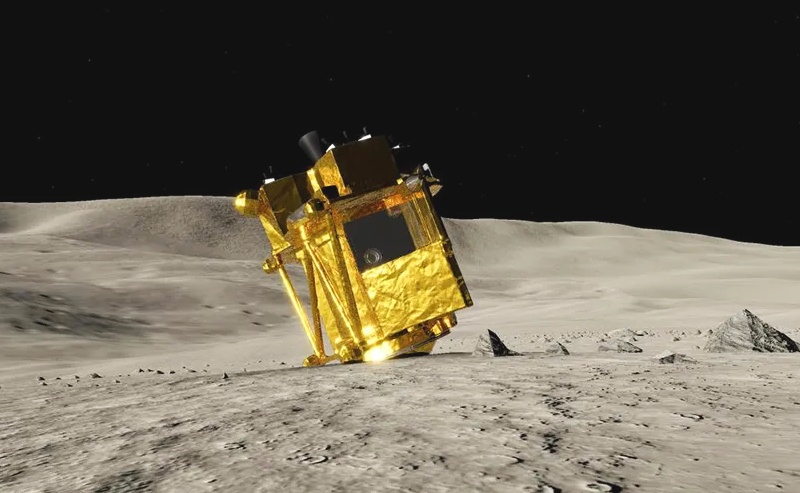Recently, the Japan Aerospace Exploration Agency (JAXA) officially announced the completion of the mission of the lunar landing module SLIM (Smart Lander for Investigating Moon), which landed on the Moon on January 20, 2024. All attempts to establish communication with the module since April have been unsuccessful. Due to this, the mission was terminated as the module’s equipment was irreparably damaged due to the lunar nighttime cold and radiation.

An artistic representation of the position of the SLIM module on the Moon after landing. Image source: JAXA
The question arises: why was the decision to end the mission made so late? The module demonstrated amazing durability. His equipment was not protected from the extremely low nighttime temperatures on the lunar surface (down to -170 °C). However, this did not prevent him from surviving not only one lunar night, which lasts 14 earthly days, but also the second, and then the third. This surprised even the creators of the module, not to mention the general public, who were expecting another miraculous awakening of the module.
However, the creators set completely different tasks for SLIM. Unscheduled “awakenings” became a kind of bonus to the main mission: to prove the possibility of precise descent to the lunar surface with a deviation of no more than 100 m from the target. SLIM coped with its main mission “excellently” – according to the final conclusions of Japanese experts, the deviation was 10 meters. This was also confirmed by a NASA orbital probe that picked up a signal from a corner reflector on board the Japanese module. Precision landing technology will be needed for descents in difficult terrain, which, for example, will be encountered by earth probes in the area of the satellite’s south pole – a potential location for establishing bases for long-term human presence.
«We express our deepest gratitude to all parties involved in the development and operation of SLIM for their cooperation and support, as well as to all those who provided moral support to the mission,” JAXA said in a farewell statement.
The SLIM module made an emergency landing on the Moon. One of the landing engine nozzles split during approach, which led to strong lateral acceleration of the module. As a result, the vehicle tipped over during landing, making it difficult for the batteries mounted on its back to collect solar energy. However, the module turned on and was able to charge batteries and maintain the operation of on-board equipment and communications. An onboard camera designed to analyze lunar rocks on the surface also became operational. The unexpected durability of the equipment turned out to be the real icing on the cake. Perhaps we will hear the continuation of this story, but the mission is completed, and the end has already been set.